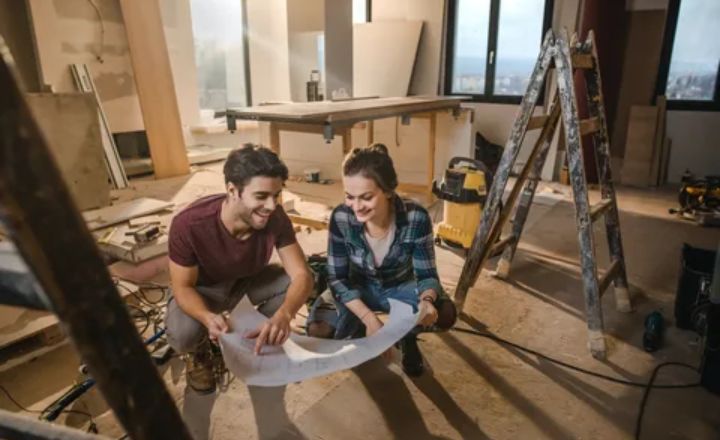Home improvement represents a transformative journey of renovating, redesigning, or upgrading residential spaces to enhance comfort, functionality, and aesthetic appeal. This article delves into the diverse facets of home improvement, exploring its importance, popular projects, sustainable practices, challenges, and the evolving trends shaping modern living environments.
Importance of Home Improvement
Home improvement endeavors are essential for several compelling reasons:
Enhanced Quality of Life: Upgrading living spaces to better suit personal preferences, lifestyles, and evolving needs of occupants.
Increased Property Value: Boosting the marketability and resale potential of homes through renovations and modernizations.
Energy Efficiency: Implementing upgrades that reduce energy consumption, lower utility costs, and promote environmental sustainability.
Popular Home Improvement Projects
Homeowners undertake various projects to improve functionality, aesthetics, and overall livability:
Kitchen Renovations: Upgrading countertops, cabinets, appliances, and layouts to enhance cooking efficiency and modernize the heart of the home.
Bathroom Remodeling: Installing new fixtures, upgrading plumbing, and redesigning layouts to create spa-like retreats and improve functionality.
Outdoor Spaces: Enhancing curb appeal and outdoor living areas with landscaping, patio installations, decks, and garden improvements.
Interior Design Updates: Refreshing interiors with new paint colors, flooring upgrades, lighting fixtures, and furniture arrangements to reflect personal style and trends.
Sustainable Practices in Home Improvement
Increasingly, homeowners and professionals prioritize sustainable practices in home improvement:
Energy-Efficient Upgrades: Installing LED lighting, energy-efficient appliances, smart thermostats, and solar panels to reduce carbon footprint and utility bills.
Water Conservation: Upgrading to low-flow faucets, showerheads, and toilets, and incorporating drought-tolerant landscaping for water-efficient outdoor spaces.
Recycled and Eco-Friendly Materials: Using reclaimed wood, recycled glass countertops, bamboo flooring, and sustainable building materials to minimize environmental impact.
Challenges in Home Improvement
Despite its benefits, home improvement projects present challenges that require careful planning and execution:
Budget Management: Balancing project costs, material expenses, and labor fees within allocated budgets.
Permitting and Regulations: Navigating local building codes, zoning regulations, and obtaining necessary permits for construction and renovations.
Project Coordination: Coordinating multiple contractors, tradespeople, and scheduling timelines to ensure smooth project execution and minimal disruptions.
Trends Shaping Modern Home Improvement
The landscape of home improvement is influenced by evolving trends and technological advancements:
Smart Home Integration: Incorporating smart technology for home automation, security systems, and energy management to enhance convenience and efficiency.
Multifunctional Spaces: Designing versatile rooms and layouts that serve multiple purposes, such as home offices, gyms, and guest accommodations.
Health and Wellness Focus: Creating wellness-oriented environments with air purification systems, natural light optimization, and ergonomic design principles.
DIY vs. Professional Services
Homeowners often weigh the benefits of DIY projects versus hiring professional services:
DIY Projects: Undertaking smaller-scale renovations and cosmetic updates, leveraging personal skills and creativity to save costs.
Professional Expertise: Engaging licensed contractors, architects, and interior designers for complex projects requiring specialized knowledge and craftsmanship.
Future Directions in Home Improvement
Looking ahead, several trends are shaping the future of home improvement:
Virtual Reality (VR) and Augmented Reality (AR): Visualizing design concepts, room layouts, and renovations through immersive technologies.
Aging-in-Place Modifications: Adapting homes with universal design features and accessibility enhancements to accommodate aging residents.
Prefab and Modular Construction: Embracing off-site fabrication and modular components for faster, more sustainable building and renovation processes.
Conclusion
In conclusion, home improvement represents a transformative journey of enhancing living spaces to align with personal preferences, functional needs, and sustainability goals. By embracing innovation, sustainability, and thoughtful design, homeowners can create environments that enhance quality of life, promote energy efficiency, and increase property value. As the home improvement industry evolves with technological advancements, changing lifestyles, and environmental consciousness, stakeholders must adapt to emerging trends, navigate challenges, and prioritize responsible practices. Understanding the dynamics of home improvement empowers individuals to transform their living spaces into sanctuaries of comfort, functionality, and aesthetic delight, enriching daily life and contributing to a more sustainable future of modern living environments.
